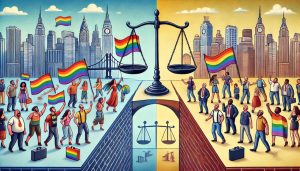LGBT in Social and Cultural Perspectives: Between Freedom and Norms

By : KH. Dr. Abdul Wadud Nafis, LC., MEI.
In the era of globalization, shifts in social and cultural values occur rapidly, including debates about the LGBT phenomenon. For some communities, LGBT existence is considered part of human rights and individual freedom. However, from a social and cultural perspective, there are concerns that this phenomenon may have negative impacts on family structures, moral norms, and the continuity of traditional culture. This paper critically examines these various impacts, particularly in societies that uphold religious and customary values.
From a social and cultural perspective, the negative impacts of LGBT are often associated with changes in traditional values and prevailing norms in a society. Below are some frequently highlighted negative impacts:
A. Changes in Social and Family Structure
1. LGBT is considered contrary to the traditional family concept, which is based on heterosexual marriage.
2. It can influence young generations’ perceptions of gender roles and the institution of marriage.
3. It has the potential to reduce birth rates in societies that rely heavily on conventional family systems.
B. Clashes with Cultural Values and Norms
1. In societies that strongly adhere to religious and customary teachings, LGBT is often seen as a threat to existing norms.
2. It may cause social tensions between groups that support and oppose LGBT.
C. Social Polarization
1. The emergence of conflicts and divisions within society due to differing views on LGBT rights and existence.
2. An imbalance between individual freedom and societal demands for moral values.
D. Impact on Education and Younger Generations
1. If LGBT is regarded as normal, there are concerns that children may experience gender identity confusion.
2. Educational curricula that support LGBT issues may conflict with cultural and religious values in various countries.
E. Influence on Public Health
1. Studies show that the LGBT community has a higher risk of mental health issues, such as depression and anxiety, due to social stigma.
2. Certain practices within the LGBT community are linked to increased risks of sexually transmitted diseases, such as HIV/AIDS.
F. Impact on Cultural Continuity
1. In cultures that rely heavily on family heritage and lineage, LGBT may be seen as diminishing the sustainability of traditional culture.
2. The reduced role of families in passing down customs and noble values.
Conclusion
The debate on LGBT issues from a social and cultural perspective reveals that this phenomenon brings complex impacts. On one hand, there is a demand to respect individual rights, while on the other hand, concerns arise over changes in long-held values and norms. Therefore, a balanced approach is necessary to address this issue, ensuring social harmony while maintaining cultural and moral principles upheld by society.
References
1. Ali, A. (2019). Sociology of Family: Social Change and the Challenges of the Era. Jakarta: Pustaka Ilmu.
2. Barker, M. J., & Scheele, J. (2016). Queer: A Graphic History. London: Icon Books.
3. Giddens, A. (2009). Sociology (6th ed.). Cambridge: Polity Press.
4. Hidayat, M. (2021). Religion, Morality, and the LGBT Phenomenon in Islamic Society Perspectives. Yogyakarta: Mitra Pustaka.
5. Plummer, K. (2015). Sexualities: Personal Lives and Social Policy. Cambridge: Polity Press.
6. Raharjo, S. (2020). Social Dynamics and Cultural Change: A Critical Analysis. Bandung: Pustaka Nusantara.
7. Weeks, J. (2017). Coming Out: Sexuality, Gender, and Identity. London: Routledge.
